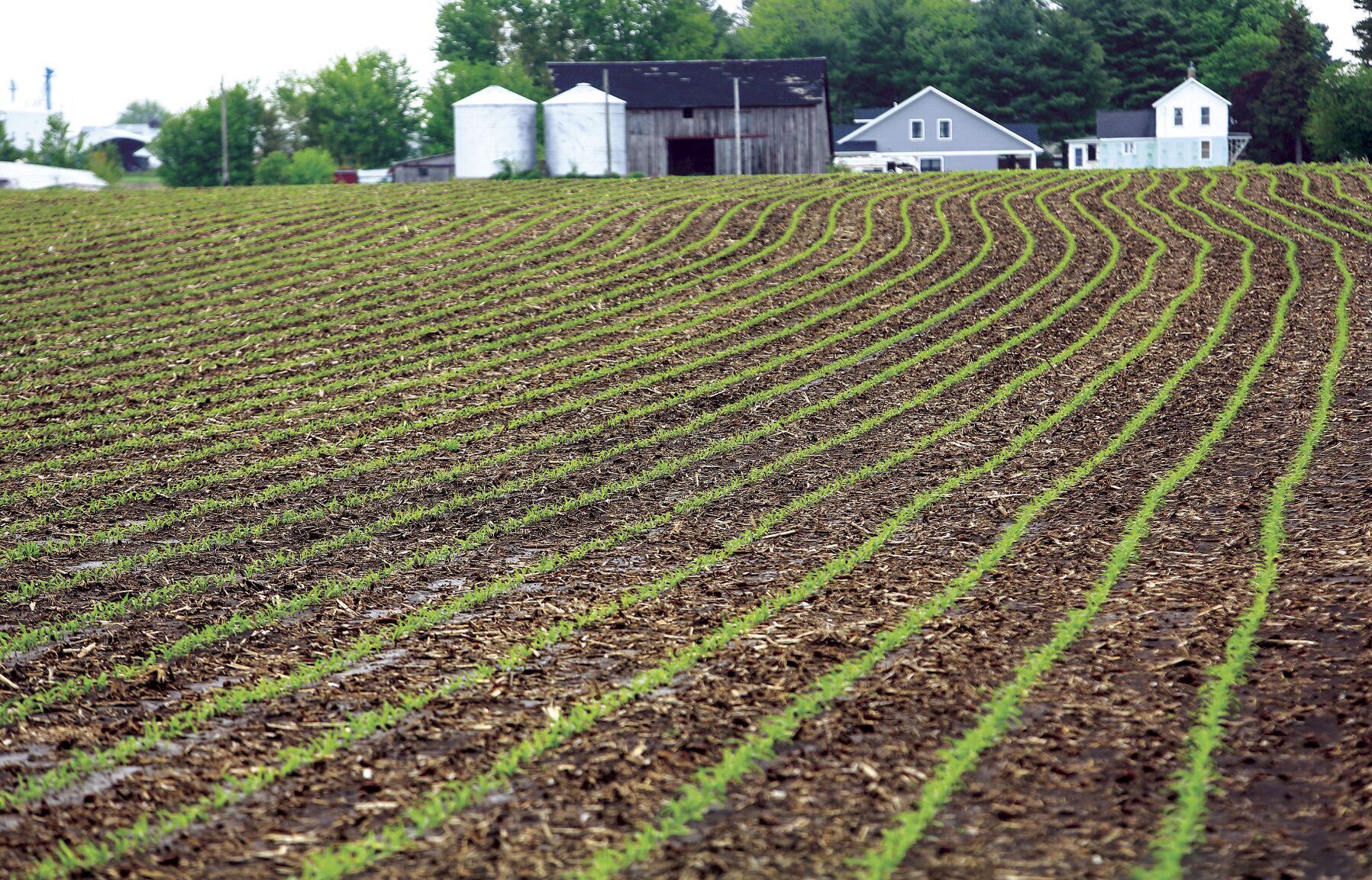CASCADE, Iowa — Like many farmers, Zach Reiter has a love-hate relationship with rain.
The precipitation offers much-needed soil moisture that helps ensure crop yield and quality, he said, but it also can be difficult to plant those crops when the rain persists over several days or weeks during planting season.
“Ideally, it would be awesome if we could get five or six days without rain to get out there and plant what’s left and then get a little rain on top of that,” Reiter said. “But that’s an ideal world, which you don’t always get.”
Reiter works on his family’s farm near Cascade to grow corn, soybeans and wheat. Their fields are currently about two-thirds planted, he said, which is behind where they were this time last year but roughly on par with the farm’s 10-year average.
He attributed much of the year-over-year delay to the recent rain but expressed minimal concerns about impact on overall yields.
“I think we still have full yield potential in our crop right now,” Reiter said. “In a week or two, I might start to get a little nervous, but I’m feeling good about where we’re at now.”
The latest crop report released by the U.S. Department of Agriculture on Monday states that 57% of Iowa’s expected corn crop has been planted and that 39% of the state’s soybean crop has been planted.
Planting lags from five-year averages for both crops by roughly one week, in large part due to the recent precipitation that has fallen across the region. Last week, Iowa farmers only had an average of 1.7 suitable planting days because of the rain.
Farmers cannot plant in wet fields without risking soil compaction and root damage, said Iowa State University Extension agronomist Joshua Michel. He said negative impacts from planting delays have been offset, however, by the reduction in drought conditions.
“We’re continuing to see some pretty significant rainfall events in northeast Iowa, which is really a blessing and a curse,” Michel said. “It’s slowing us down some, but it’s also reducing some of that drought risk.”
Per the USDA’s drought monitor, roughly 35.4% of Dubuque County is experiencing “abnormally dry” conditions. While still representing a considerable acreage, Michel said, that’s down from 98.5% at the beginning of the year.
Jackson County is nearly drought-free, with only 3.1% of the county experiencing abnormally dry conditions.
Delaware County has a higher percentage of drought conditions than Dubuque and Jones counties, Michel added, though those conditions are also far better than they were before the recent rain. Drought conditions remain in much of Clayton County.
“If you go along the Mississippi, those counties are looking in pretty good shape, but if you go a county away from there, you get a different story where that rain is really needed,” Michel said. “In terms of drought, the needle is moving in the right direction.”
Jack Smith, of Bankston, said he was grateful for the added moisture. Smith farms with his family near Bankston to raise beef cattle and row crops including corn and soybeans. Planting there started last week, which Smith said is behind schedule but not alarmingly so.
“I’ve been farming since 1978, and we’ve had delays much worse than this,” Smith said. “Last year, we farmed worrying rainfall to rainfall, and there’s a lot of anxiety with that, so I’d rather have the rain now to restore that soil moisture.”
Sentiments are similar in other parts of the tri-state area, which also are experiencing decreased drought conditions thanks to the recent precipitation. Drought conditions are much improved in Grant County, Wis., and virtually nonexistent in Jo Daviess County, Ill., and Lafayette County, Wis.
In Illinois, the USDA reports 42% of the expected statewide corn crop and 39% of the soybean crop had been planted as of Sunday. In Wisconsin, those rates were 40% and 37%, respectively, though southwest Wisconsin fared better in both areas.
University of Wisconsin Extension Regional Crops and Soil Educator Jordyn Sattler attributed some of that southwest Wisconsin success to the unseasonably warm and dry winter, which allowed some farmers to get a jump on tillage and other pre-planting activities.
“With the winter we had, the soil didn’t freeze like it normally does, so that allowed a lot of that winter moisture and early spring moisture to soak into the ground for use now, so that has our soils in pretty good condition,” Sattler said.
Sattler and Michel both cautioned area farmers to be on the lookout for certain pests as the weather warms, however, such as black cutworms or alfalfa weevils.
When soils don’t freeze in the winter, Michel said, it allows for better survival of certain pests that would usually be killed off by the colder weather.
“The best way to put it is that if winter is easy on us, it’s easy on the pests, too,” he said.


